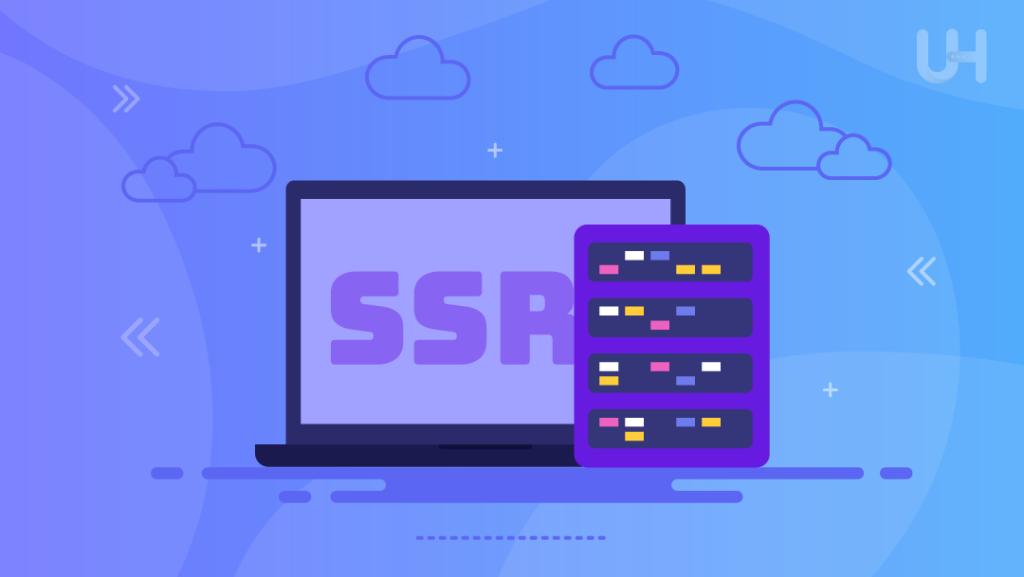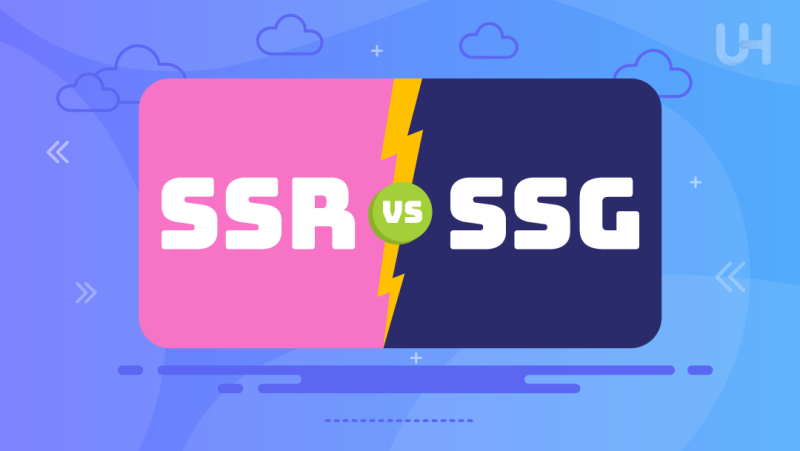Probably one of the most important decisions in web development is the method applied to render the website’s content, as this affects performance and user experience, hence SEO. Two such popular approaches are Server-Side Rendering, popularly known as SSR, and Static Site Generation, commonly referred to as SSG. Both methods, SSR vs SSG, have their advantages and challenges, thus requiring a proper decision for developers looking to optimize their websites.
In this blog, we will cover all the important differences between SSR vs SSG on performance, SEO impact, scalability, and many more. By the end of this comparison, you’ll know much more about how to select a rendering method that best fits your website’s specific needs and goals.
Performance and Speed: Which Renders Faster?
The speed at which content can be returned to a website can often prove to be critical to user retention and satisfaction. SSG vs SSR each provide different approaches toward the delivery of content, each impinging differently on performance.
SSR
Server Side Rendering (SSR) generates HTML on a server in real-time for each user request. Such a process provides the opportunity for up-to-date content but at a pace that can be slow, especially during peak traffic. The server must render the page for each visitor, which may result in longer initial load times compared to static pages.
SSG
Static Site Generator (SSG) creates static HTML files during compile time that are delivered to the end-user. Because the content is pre-rendered, it gives SSG a very fast load time, which includes significant performance implications for low bounce rate websites. This comes with the cost of losing dynamic content updates since a new build needs to happen to reflect changes.
SEO Impact: Optimizing Search Engine Rankings

SEO must be taken very seriously in the rendering method that directly touches your website, as this factor will affect how search engines index and rank your site. Server-side rendering vs Static Site Generator have categorically different implications for SEO, directly changing how quickly and efficiently one can crawl websites.
SSR
SSR sends real-time content to the search engine and ensures that all pages are fully rendered and accessible for crawling. The real-time rendering reflects the updates that fall into the search engine indexes, which could result in SEO improvements. However, the first load time may only affect the ranking if the server responds very slowly to a high click-through rate.
SSG
SSG basically delivers static, pre-rendered pages to the server. This means that such pages are faster, intrinsically, and easier for search engines to index. Therefore, SSG may help you to improve your SEO rankings. Yet, every change in content necessitates a full rebuild, which could potentially slow the rate of taking the subsequent updates live on the search engine results.
SEO Dedicated Server To Enhance Rendering Process!
For optimized performance and cost-effective scalability, consider using an SEO server from UltaHost. It perfectly complements SSR vs SSG setups, ensuring fast load times, robust server resources, and enhanced SEO rankings for your website.
User Experience: Delivering Content Effectively
Web design all goes to user experience, which determines how visitors will interact with and perceive your site. Both SSR and SSG have implications for the way one delivers content, differing in terms of responsiveness and interactivity.
SSR
SSR provides a much more personalized and dynamic user experience since every visitor’s request gets specially made content. This approach can achieve real-time updates and interactivity, which makes it perfect for frequently changing data. However, reliance upon server processing might make the first load time slower, thus degrading the overall user experience.
SSG
SSG provides a very responsive user experience since it gives prebuilt static pages for almost instant loading. This speed will assure smoothness and seamlessness of interaction—desirable where there is much content. However, SSG might not best handle personalized content or real-time updates. Changes take time to rebuild; hence, that impacts the interactivity, enforcing restrictions on the site.
Scalability: Handling High Traffic Loads
This is critical for websites that expect fluctuating or high traffic volumes. How well SSR and SSG handle large volumes of visitors can decisively influence their performance and reliability under stress.
SSR
One of the more difficult challenges in scaling SSR is that every request from a user requires server resources for page rendering in real-time. If you get more traffic, you get increased server load, slow response times, or a fallen server if it can’t keep up. Caching strategies help a little, but scaling SSR to very high traffic will be resource-intensive.z
SSG
SSGs are intrinsically much more scalable because they serve existing, prerendered static files directly from a Content Delivery Network (CDN). Such an approach relieves server loads, so there wouldn’t be any visible performance degradation under conditions of high traffic volume. That being the case with static files, SSG sites will ensure fast loading times and reliability in front of huge traffic spikes.
Development Complexity: Ease of Implementation
The differences between implementing and maintaining a website are dramatic when comparing SSR vs SSG. Knowing development challenges and ease of use with both methods is highly relevant to picking the right approach.
SSR
Implementations of SSR are usually more complex, requiring robust server-side logic to render the pages dynamically. That means handling all the management on the server side: managing resources required by servers, caching strategies, and optimizing server performance so as not to slow down. Moreover, it takes additional time to maintenance and debug SSR setups due to the real-time nature of the processing.
SSG
SSG is much easier to set up since it generates static HTML files during the build process. Developers can easily write frontend code without fear of any server-side rendering complexity. SSG setups are relatively easy to maintain and have much less server overhead and fewer moving parts, which makes them particularly a good choice for a static or content-heavy website.
Dynamic Content Handling: Adapting to Real-Time Changes
Adaptability is one of the major distinguishing factors between SSR and SSG when it comes to dynamic content handling. On SSR, any changes done can be shown in real-time. Both methods have different ways of managing frequently updated or customized content.
SSR
Because SSR involves the generation of pages in real-time per request, it supports dynamic content quite well. This means that content would be updated and customized in real-time according to user interactions or changes in data. Subsequently, SSR works best for sites requiring real-time updating, such as e-commerce platforms or a social media feed. However, if not optimized properly, it hurts performance.
SSG
SSG holds less ground when it comes to dynamic content that involves real-time dynamics. Due to its nature, which uses pre-rendered static pages, the site needs to be rebuilt in order to show changes, and this may add delay to the extemporization process for the newly updated content. At the same time, incremental static regeneration or client-side rendering techniques could help do some kind of dynamic content over SSG, but it would not be that immediate compared to SSR.
Hosting and Infrastructure Requirements: Cost and Resources

Another important implication of the choice between SSR and SSG will be in website server and infrastructure. The cost implication, in terms of resources required by each method, is a critical basis for decision-making.
SSR
SSR requires much faster server infrastructure, as a server has to process and render every page request in real-time. Continuous use of servers, such as in the case of heavy traffic, may raise hosting costs. In addition, scalable server resources and their possible caching add complexity and are more expensive to maintain for an SSR setup.
SSG
SSG typically has cheap dedicated hosting and infrastructure requirements. All content is pre-rendered to static files; thus, it can be efficiently served from a CDN with very little server involvement. This reduces related costs and complexities of hosting, making SSG cost-effective in cases like a website with static or less frequently updated content.
Use Cases: When to Choose SSR or SSG
The choice between the use of SSR and SSG will majorly depend on your website’s needs and goals. Knowing the proper use cases for each method will help one choose the most appropriate rendering approach.
SSR
The most suitable place to use SSR would be on websites requiring real-time content changes, personalization, and user interaction. Examples include e-commerce sites, social media platforms, and applications with content that changes dynamically based on user input. SSR makes an even more compelling case for sites needing to serve updated content instantly on request at the cost of somewhat additional complexity and server load.
SSG
SSG is best for those websites where speed and scalability come first, and the content doesn’t need to change frequently. This would be everything from blogs to documentation sites and marketing pages, with portfolios also on the list. This makes SSG very effective in applications that allow for fast pre-rendering has fast load times with low hosting costs, making it very good for these kinds of content-heavy but static sites.
Conclusion
The choice between SSR vs SSG solely depends on individual requirements and goals for the website. SSR should be used where dynamic, real-time content is required that must be personified or changed frequently. In contrast, it consumes more server resources and can be a bit cumbersome to implement. On the other hand, SSG is good at fast, scalable, and cost-effective websites, with special strengths in static or content-heavy pages such as blogs and marketing sites. What it lacks in terms of immediacy of real-time updates, it more than makes back on performance and SEO fronts.
Consider UltaHost’s Fast Server for more quicker rendering rate. UltaHost’s Fast VPS hosting packages provide reliable and instantaneous access no matter how big the task is. UltaHost prioritizes speed in the way that we host servers.
FAQ
What is Server-Side Rendering?
SSR creates HTML content for each user request on the server, making it dynamic and personalized in real-time.
What is Static Site Generation (SSG)?
SSG pre-renders static HTML files during the build process, enabling fast and scalable websites best suited for static content.
Which one is faster — SSR or SSG?
SSG is faster due to serving pre-built static files. SSR could be slower since it goes through the process on the server side in real-time.
Which approach to rendering works better with SEO?
SSR is more SEO-friendly than SSG, which has the advantage of faster load times. Still, SSR will make sure that new content can be indexed immediately.
When should I choose SSR over SSG?
Choose SSR for sites that must be updated live, are personalized, or have high-frequency changes to the content, such as online stores or social media.
Can SSG handle dynamic content?
SSG is less ideal for dynamic content in real-time, but it can handle some dynamic elements through incremental static regeneration or client-side rendering.
Which is the more economical way?
SSG is generally more cost-effective than SSR because it needs less hosting and infrastructure since it serves static files, hence putting minimal load on the server.










